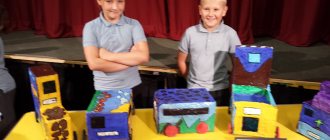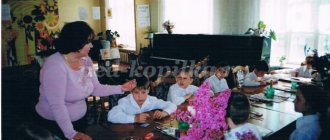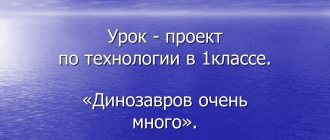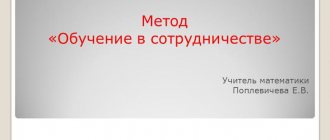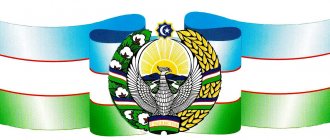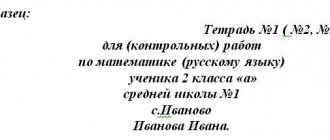Teaching methods in a modern school
“There are exactly as many good methods as there are good teachers” D. Polya
“Tell me - I will forget, Show me - I will remember, Involve me - I will understand.” Chinese proverb
“All knowledge remains dead if initiative and initiative do not develop in students: students must be taught not only to think, but also to want.” N.A. Umov
The development of a student occurs more effectively if he is involved in activities.
A person remembers
- 10% of what he reads
- 20% of what is heard
- 30% of what he sees;
- 50-70% is remembered when participating in group discussions,
- 80% - by independently identifying and formulating problems.
- 90%, when the student is directly involved in real activities, in independently posing problems, developing and making decisions, formulating conclusions and forecasts.
An essential component of pedagogical technologies are teaching methods.
Teaching methods are ways of interrelated activities of teachers and students to implement the tasks of education, upbringing and development. (Yu. K. Babansky). Teaching methods are ways of a teacher’s teaching work and organizing students’ educational and cognitive activities to solve various didactic tasks aimed at mastering the material being studied. (I.F. Kharlamov).
“The methods used in educational activities should arouse the child’s interest in understanding the world around him, and the educational institution should become a school of joy. The joys of knowledge, creativity, communication." V.A. Sukhomlinsky
Requirements for teaching methods
Scientific methods. Availability of the method, its compliance with the psychological and pedagogical development capabilities of schoolchildren.
The effectiveness of the teaching method, its focus on solid mastery of educational material, on fulfilling the tasks of educating schoolchildren.
The need to systematically study and use innovative methods in your work.
The choice of teaching methods depends on:
- From general and specific learning goals; content of the material of a particular lesson.
- From the time allotted for studying this or that material.
- Depending on the age characteristics of the students and the level of their cognitive abilities.
- Depending on the level of preparedness of students.
- From the material equipment of the educational institution, the availability of equipment, visual aids, and technical means.
- From the capabilities and characteristics of the teacher, the level of theoretical and practical preparedness, methodological skills, and his personal qualities.
Features of a modern lesson
The modern lesson is a free lesson, a lesson freed from fear: no one scares anyone and no one is afraid of anyone.
- A friendly atmosphere is created.
- A high level of motivation is formed.
- Great importance is attached to methods of educational work.
- Special attention is paid to the development of students' skills in independent cognitive activity and a creative attitude to the educational process.
Organizational basis of the lesson
- Everyone works and everyone works.
- Everyone's opinion is interesting and everyone's successes are pleasing.
- Everyone is grateful to everyone for their participation, and everyone is grateful to everyone for their progress towards knowledge.
- Trust in the teacher as the leader of group work, but everyone has the right to an initiative proposal.
- Anyone and everyone has the right to express an opinion regarding the lesson.
A student is an active subject of the educational process, showing independence in developing and making decisions, ready to take responsibility for his actions, self-confident, and purposeful.
A teacher is a consultant, mentor, partner.
The teacher’s task is to determine the direction of work, create conditions for student initiative; competently organize students' activities.
Features of modern teaching methods
- A method is not the activity itself, but the way it is carried out.
- The method must necessarily correspond to the purpose of the lesson.
- The method does not have to be wrong, only its application can be wrong.
- Each method has its own subject content.
- The method always belongs to the actor. There is no activity without an object, and there is no method without an activity. (According to M.M. Levina)
The learning process should evoke in the child an intense and internal urge for knowledge and intense mental work.
The success of the entire educational process largely depends on the choice of methods used.
My personal position
- The optimal combination of forms of work in the lesson.
- Teaching students the basic techniques of educational activities.
- Development of thinking processes in students.
- Creating conditions to ensure high student activity in the lesson.
- Implementation of the principle of individual approach.
To ensure cognitive activity and cognitive interest of students at various stages of the lesson, I use active forms and methods of work.
I consider the most productive:
- Game forms;
- Organization of group, pair and individual work;
- Organization of independent activities of students;
- Creation of specific situations, their analysis;
- Posing questions that activate dialogue.
- Problem-based learning.
We need to use a variety of methods and find new ones. The school should be a pedagogical laboratory, the teacher should show independent creativity in his teaching and educational work. L.N. Tolstoy.
A game
“The child does not get tired of work that meets his functional life needs.” S. Frenet
Didactic games - arouse keen interest in the process of cognition, intensify the activity of students, and help to more easily assimilate educational material.
Role-playing games are a small scene played out by students, helping to visualize, see, and revive circumstances or events familiar to students.
In mathematics lessons, to develop activity and attention, I conduct mental calculations with game elements.
Couples and groups
This method gives students more opportunities to participate and interact. Working in pairs and groups develops in children the ability to accept a common goal, share responsibilities, agree on ways to achieve the proposed goal, correlate their actions with the actions of their partners, and take part in comparing goals and work. To work on the topic of the lesson, the “Hives” and “Business Cards” methods are used for groups of rotating or permanent composition. I use the “Creative Workshop” method with great success in general lessons.
Problematic methods.
Contribute to the development of intellectual, objective and practical motivational spheres of the individual.
A problematic question is a question that requires intellectual effort, analysis of connections with previously studied material, an attempt to compare, and highlight the most important provisions.
A problematic situation is a comparison of two or more mutually exclusive points of view.
Problem-based assignments are assignments that pose problems for students and direct them to independently find solutions.
Project method
A method based on children's needs and interests, stimulating children's initiative; with its help, the principle of cooperation between a child and an adult is realized, allowing one to combine the collective and the individual in the educational process. Focused on the development of research and creative activity of students, on the formation of universal educational activities. I use it mainly in environmental lessons. “Visiting winter”, “My pets”, “The secret of my last name”.
Main stages of project activities
- Selecting a project topic.
- Working with different sources.
- Selecting the form for presenting the project.
- Project work.
- Presentation of results.
- Project protection.
Summarizing. At the end of the work, the student must answer the following questions:
- Did I accomplish what I set out to do?
- What was done well?
- What was done poorly?
- What was easy to do and what did I struggle with?
- Who could thank me for this project?
Discussion method
Where a person is a creator, there he is a subject. The need for communication is the first manifestation of the subject’s activity.
The ability to communicate with each other and conduct a discussion allows each child to develop the ability to listen, speak in turns, express their opinions, and experience a sense of belonging in a joint collective search for truth. Students must know the rules of discussion. The teaching comes from the students, and I direct the collective search, pick up the right idea and bring them to conclusions. Students are not afraid to make a mistake in their answer, knowing that their classmates will always come to their aid, and together they will make the right decision. To conduct discussions and make decisions, I use, for example, methods such as “Traffic Light” and “Brainstorming”.
ICT
The use of ICT by primary school teachers in the educational process allows:
- develop students' research skills and creative abilities;
- strengthen learning motivation;
- to form in schoolchildren the ability to work with information, to develop communicative competence;
- actively involve students in the learning process;
- create favorable conditions for better mutual understanding between teachers and students and their cooperation in the educational process.
The child becomes thirsty for knowledge, tireless, creative, persistent and hardworking.
Unfinished Story Method
I use it mainly in literary reading lessons. Reading the text, I stop at the most interesting point. The child has a question: “What’s next?” If a question arises, it means there is a need to find out, which means the child will definitely read the text. "Reading with stops."
2-3 stops are highlighted in the text, and children are asked questions that encourage critical thinking.
What made the hero do this?
How will events develop further? The “Prediction Tree” technique is used. Children learn to argue their point of view and connect their assumptions with text data.
Methods for starting a lesson
"Let's smile at each other."
I smiled at you, and you will smile at each other, and think how good it is that we are all together today. We are calm, kind and welcoming. Exhale yesterday's resentment and anger, anxiety. Forget about them. Breathe into yourself the freshness of a clear day, the warmth of the sun's rays. Let's wish each other a good mood. Pat yourself on the head. Give yourself a hug. Shake your neighbor's hand. Smile at each other.
"Greetings".
Students walk around the class and greet each other, saying greetings or saying their names. This allows you to have a fun start to the lesson, warm up before more serious exercises, and helps establish contact between students within a few minutes.
Methods for clarifying goals
“We know - we don’t know”
The goals of using the method - the results of using the method allow me to understand what students know from the material planned for the lesson and what they do not. What knowledge can schoolchildren rely on when teaching new material? I ask students questions, leading them to the purpose and objectives of the lesson. Students, answering them, find out together with me what they already know about this topic and what they don’t.
"Flower Glade"
Before you begin clarifying expectations and concerns, I explain why it is important to clarify goals, expectations, and concerns. Students write down their expectations on blue colors, and their fears on red. Those who wrote down attach flowers to the clearing. After all the students attach their flowers, I voice them, after which we organize a discussion and systematization of the formulated goals, wishes and concerns. During the discussion, we clarify the recorded expectations and concerns. At the end of the method, I summarize the clarification of expectations and concerns.
"Air balloons"
Summarizing methods
They allow you to effectively, competently and interestingly summarize the lesson and complete the work in the form of a game. For me, this stage is very important, because it allows me to find out what the children have learned well and what they need to pay attention to in the next lesson.
"Cafe"
I invite students to imagine that they spent today in a cafe and now I ask them to answer a few questions:
- I would eat more of this...
- Most of all I liked…
- I almost digested...
- I overate...
- Please add…
"Chamomile"
Children tear off chamomile petals, pass colorful sheets around in a circle and answer the main questions related to the topic of the lesson written on the back.
"Final Circle"
The poster has a large circle divided into sectors: “I learned new knowledge,” “My participation in the group,” “I was interested,” “I liked doing the exercises,” “I liked speaking in front of the guys.”
All students are asked to draw a circle with a felt-tip pen. The brighter the sensations, the closer to the center the circle is located. If the relationship is negative, the circle is drawn outside the circle.
Relaxation methods
If you feel that your students are tired, take a break and remember the restorative power of relaxation!
Method "Earth, air, fire and water".
Students, at the teacher’s command, depict one of the states - air, earth, fire and water.
I myself take part in this, helping insecure and shy students to participate more actively in the exercise. "Funny Ball" “Physical exercises for the eyes.” “Many subjects at school are so serious that it’s good to take every opportunity to make them a little fun.”
It is necessary to use various forms, methods and techniques of teaching in primary school:
- allow you to teach the material in an accessible, interesting, bright and imaginative form;
- promote better knowledge acquisition;
- arouse interest in learning;
- form communicative, personal, social, intellectual competencies.
Lessons using active learning methods are interesting not only for students, but also for teachers. But their unsystematic, ill-considered use does not give good results. Therefore, it is very important to actively develop and implement your own gaming methods into the lesson in accordance with the individual characteristics of your class.
Image: ds63teremok.edusev.ru
Advantages of non-standard forms
Non-standard forms of training have a number of advantages:
- creating interest among schoolchildren in new material;
- encouraging creativity and developing the creative abilities of students;
- the use of illustrative material and technical means for easier learning of information.
Conducting such lessons gives teachers a chance to show their creativity and professionalism. It is important to take into account the fact that frequent non-standard lessons will soon cause rejection and boredom among schoolchildren. Therefore, you should not get too carried away with such activities, but introduce them into the educational process in portions.
In this video you will learn how to move away from the traditional form of conducting a lesson:
